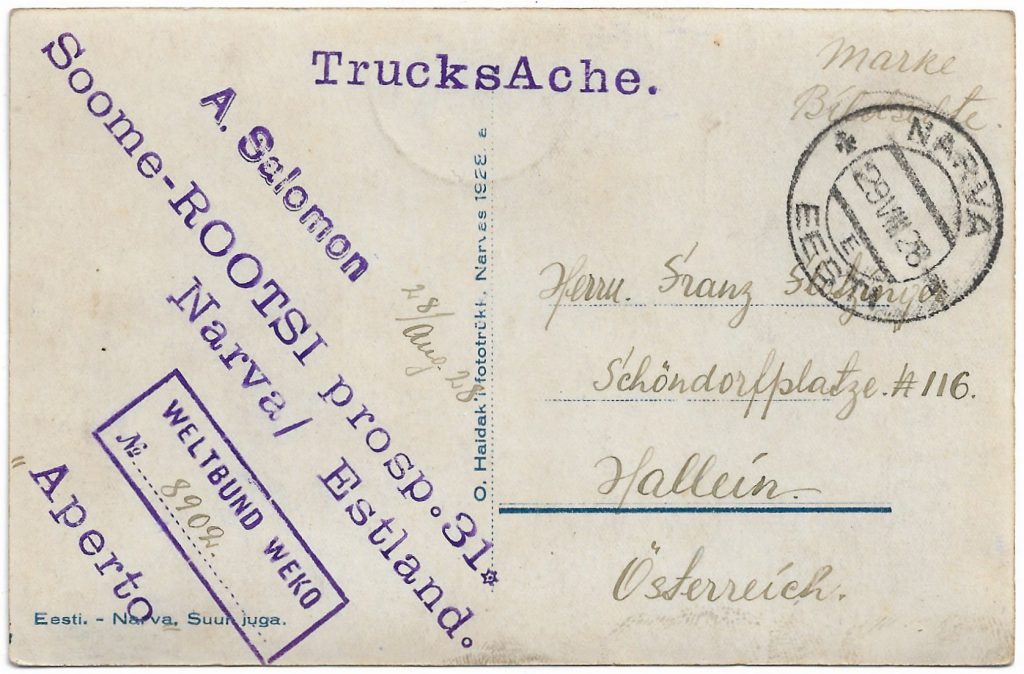In July 1917, a referendum was held in the district Narva. The population, at this time for half Russian and half Estonian, chose to join an independent Estonia. So Narva became part of independent Estonia in 1918, including Ivangorod on the other side of the river. On 28 November the war started in Narva and the next day the Red Army occupied the city. The occupation lasted until 19 January 1919
With the treaty of Tartu (2 February 1920) Russia recognized the independence of Estonia. The border was somewhat east of the Narva river.
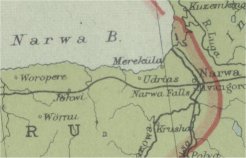
the map in the Times Atlas 1922.
The postoffice is opened 19 November 1918 and there are recorded three early provisional cancellations, used in 1918: double circle Russian datestamps with Russian place name (serial **b and **z, type 14A7) and a single line postmark (capital first letter, type 14D1).
In Narva also the old Russian postmarks are reused. The easiest distinction: the date of the month is in Arabic numerals. As the card here below, sent 29-5-1924.
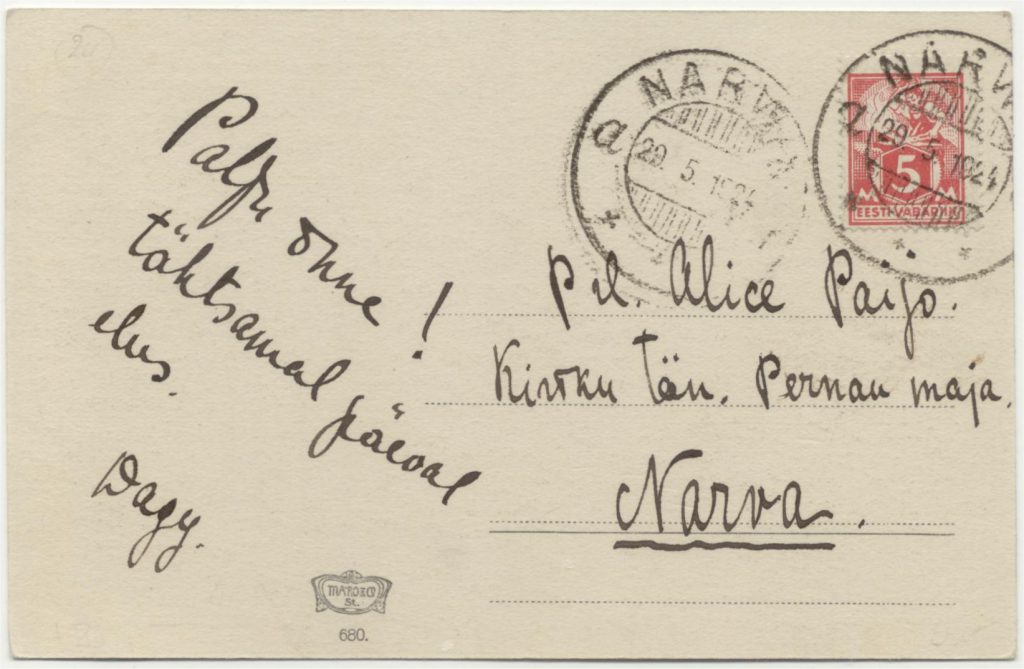
Reuse of the old Russian postmarks was done in the beginning also locally. In the handbook EESTI there are two types provisional postmarks: without EESTI below (type 14F1) and with EESTI (type 14F2). In Narva only type 14F1, the postmark on this card, is used. This type has also bars.
In Narva this postmark has clear dark bars (1919-1922, type 14F1a) or more light bars (1923-1928, type 14F1b).
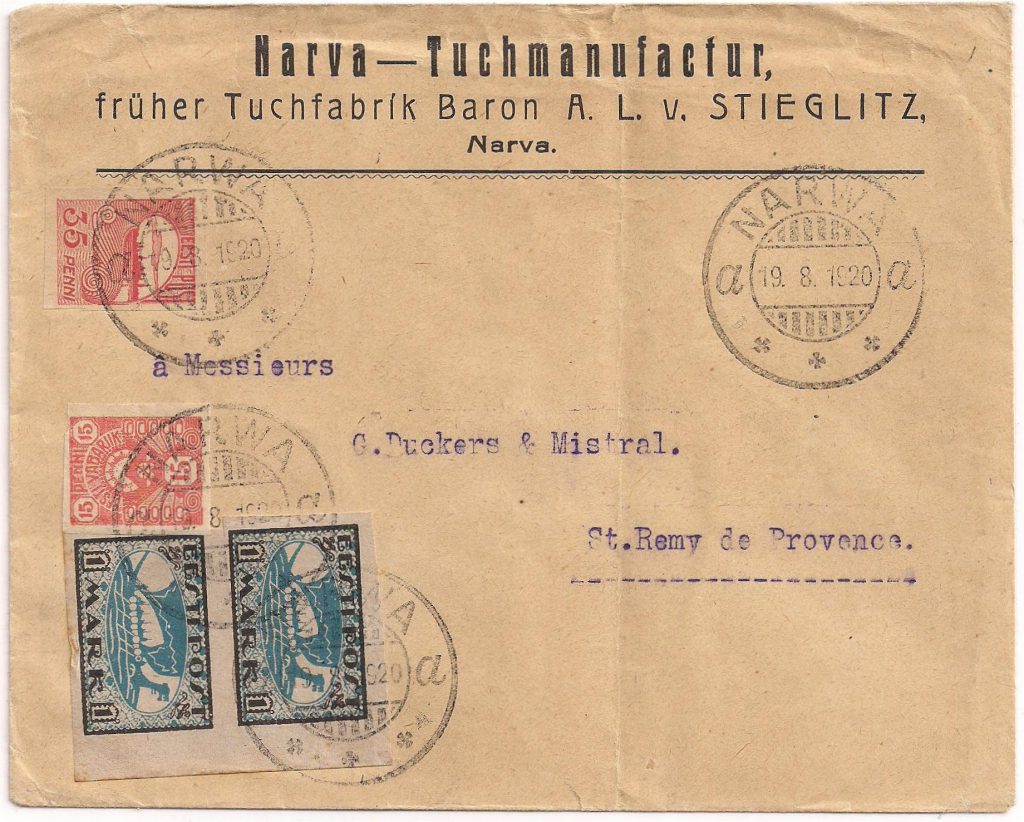
The cover is of a textile factory in Narva, ‘former Baron A.L. von Stieglitz’. After the death of his father in 1843, Baron Alexander von Stieglitz (1814-1884) took control about Stieglitz and Co.: paper factory in Ekaterinenhof and textile factories in Narva. In 1860 he liquidated all his commercial enterprises: with the start of the State Bank of the Russian Empire, 31 May 1860, Stieglitz became its first governor and held this position to 1866. After this period he was mainly philanthropist.
Stieglitz is buried in Ivangorod, part then of the city of Narva, at the Church of the Holy Trinity.
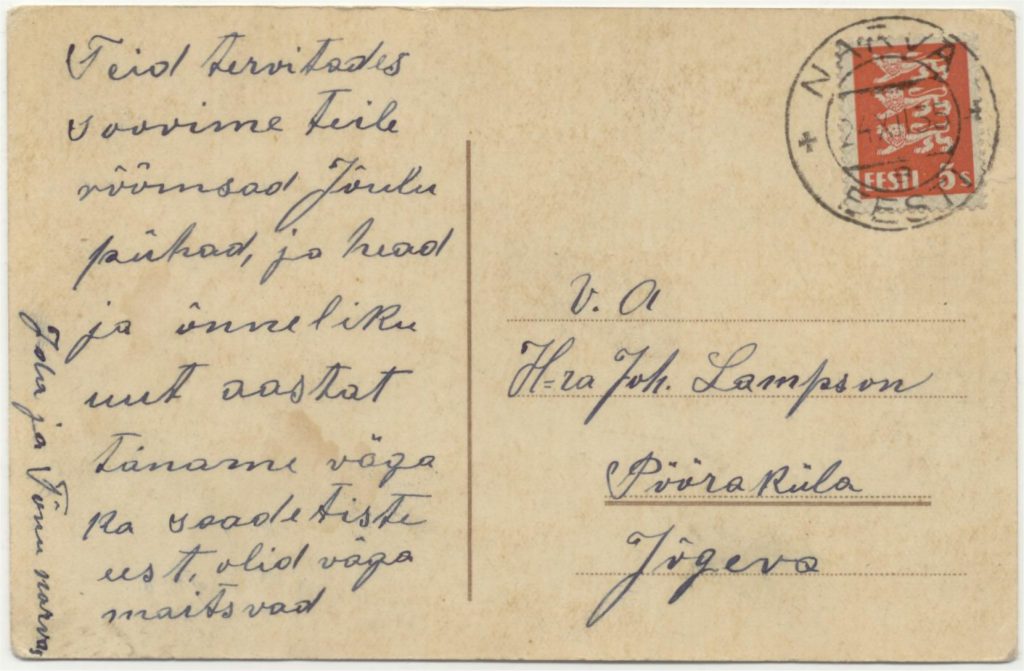
In Narva are the following Estonian double circle cancellations used:
*15A2: Former Russian date stamps, centrally re-engraved, with EESTI: five-pointed starlets, only with serial letter b
*15B1: New Estonian, month in Roman numeral and EESTI: with two crosses, only with serial letter G
*15B4: New Estonian, month in Roman numeral and EESTI: with two Maltese crosses, with serial letters B, C, D, E en F (B? and E tw0 different).
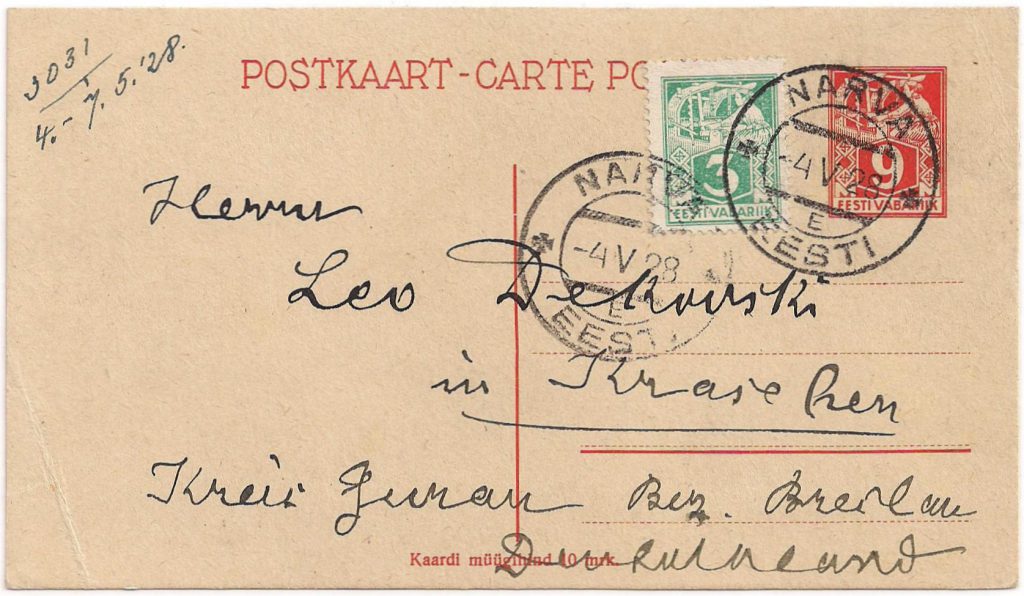
The postal stationary above is issued 28 March 1923, the rate for an international p[ostcard was 9 marka (between 1-11-1922 and 1-2-1925)
Between 1-2-1925 and 1-1-1928 the rate was 12 marka. Between 1-1-1928 and 11-1935 the rate was 12 senti: additional postage stamp necessary on this card.
From 1-1-1919: 1 Estonian Mark = 100 Penni
Due to the rapid inflation a new currency was necessary in 1928: rate 100 Mark = 1 Kroon. From 1-1-1928: 1 Kroon = 100 Senti.
The postmark: the new Estonian postmark, month in Roman numeral, serial letter E: type 15B4

In 1856 Baron Knoop, Ludwig Knoop, was owner of the island and he founded there a textile factory: Krenholm Manufacturing Company. It became the most important factory in Russia and the cotton spinning and manufacturing mills were the largest in the world.
More about this : en.wikipedia.org/wiki/Krenholm_Manufacturing_Company.
Now the border between Estonia and Russia runs through the eastern branch of the waterfalls.
On the address side of the card – here below – the postmark is clearer.
